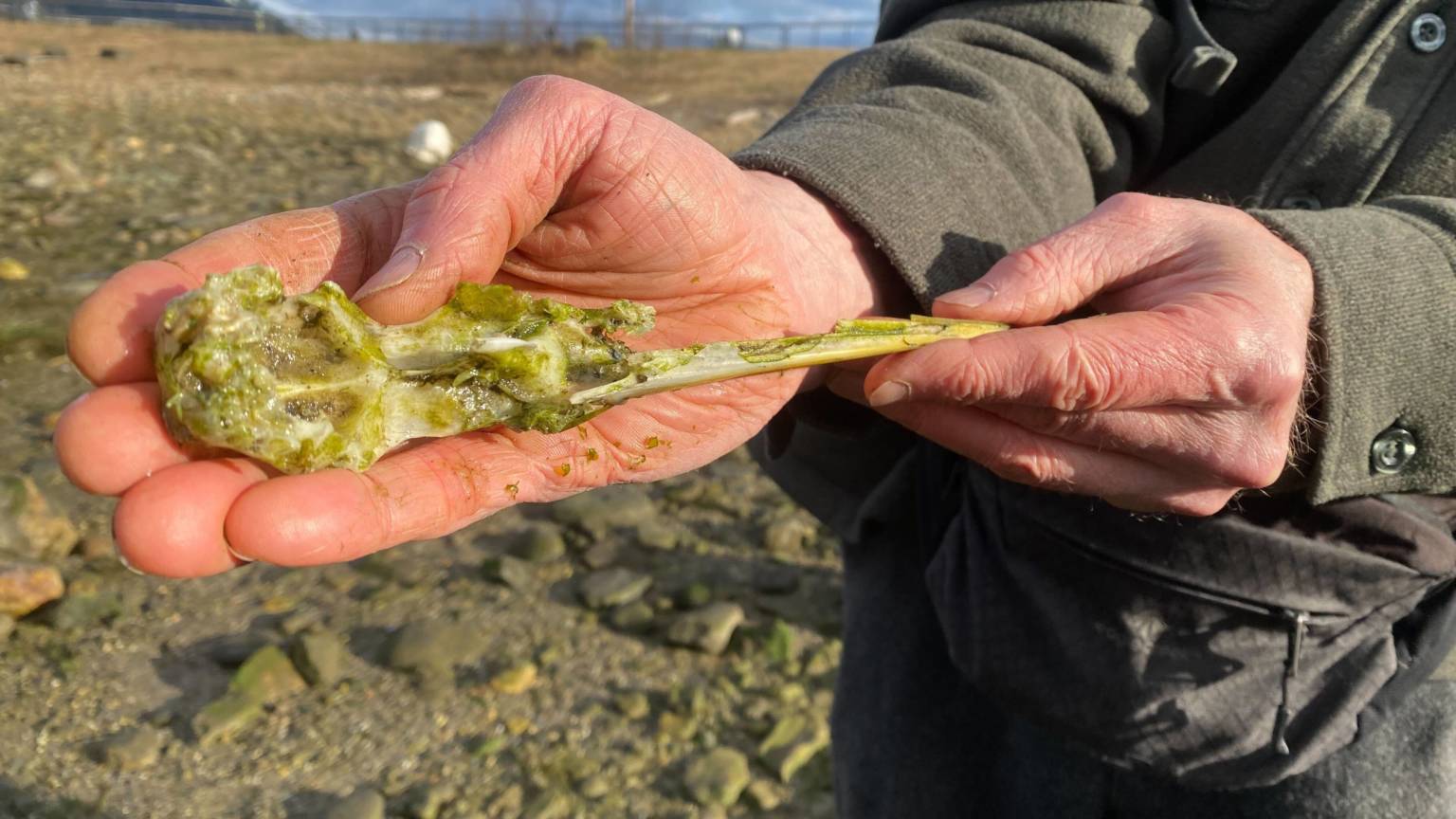
“Oh-ho, look at this,” naturalist Richard Carstensen calls out to his friend and colleague Steve Merli.
The men squat below the high tideline, just off the path at the downtown Juneau Seawalk. They’re studying part of a cream-colored skull with a long beak. Carstensen measures it with the length of his hand, then gently plucks it out of the damp earth.
“Jesus Christmas!” Merli whispers. “Unbelievable.”
“Could be a heron, could be a sandhill crane,” Carstensen says, “And I’m trying to rule out sandhill crane.”
The two men were among the founding members of Discovery Southeast, an outdoor education non-profit for youth and families. This summer the organization will partner with some veteran trackers to lead a certification course aimed at adults.
Wilderness trackers read signs in the natural world to find and identify animals. It’s useful for hunting, conservation and photography. But it’s more than just finding an animal, paw print or bone, they say. It’s understanding the context. For example, Carstensen can see signs that somewhere on the road from bird to skeleton, that heron was a meal.
It doesn’t seem like this beach in downtown Juneau would be a tracking hotspot — while they’re examining the skull, a plane flies overhead and evening traffic whizzes by. Yet they spotted a dozen goats on a nearby mountainside, found the sternum of a gull and identified the skull they found as a heron’s.
Merli says it’s all about observing and letting curiosity be your guide.
“Everything is a track, and every track tells a story,” he said. “We can just look at all this stuff that’s around us. There’s all kinds of sign here.”
The track and sign course is likely to take place a bit more off the beaten path.
It’s an intensive 2-day workshop that will teach students to think like Merli and Carstensen — to identify prints and understand how wildlife interacts with landscape.
Former Juneauite Kevin O’Malley will host the workshop through his wilderness school near Seattle. He says the ecology of Southeast Alaska is exciting for trackers because of big animals like bears and mountain goats. Six people around the world have already signed up. A few are Juneau locals, and one plans to come from as far as Central Asia, he said.
Marcus Reynerson from Tracker Certification North America will teach the course. He is one of only ten evaluators who can certify new trackers for the program. He says it’s the first time his organization has offered a tracker certification in Alaska.
“Really, at the basis, wildlife tracking is just pattern recognition,” he said. “And humans have kind of evolved to read patterns.”
A tracker certification can be useful for certain jobs, like naturalist or resource management positions. It’s also a way to measure personal growth, like the belt system in karate. Reynerson is kind of like a black belt in field ecology.
He says tracking is just another lens through which to view the living world.
“There’s this very old kind of aspect to it, that’s in our bones, that’s in our DNA, that’s in our humanity, where we just do it. And so when you turn that lens on reading the signs and the tracks of animals around, you can really tap into a rich story.”
There will be a test with up to 60 questions that range from simple to complex. Reynerson says not to sweat it too much. At the end of the day, your interpretation of the natural world is still up to you.
To learn more about the program or sign up, visit South Sound Nature School’s website.
"story" - Google News
April 07, 2022 at 12:19AM
https://ift.tt/a1kndPH
Wildlife tracking workshop to come to Juneau: 'Every track tells a story' - KTOO
"story" - Google News
https://ift.tt/41Nq92y
https://ift.tt/4UBIC52
Bagikan Berita Ini














0 Response to "Wildlife tracking workshop to come to Juneau: 'Every track tells a story' - KTOO"
Post a Comment